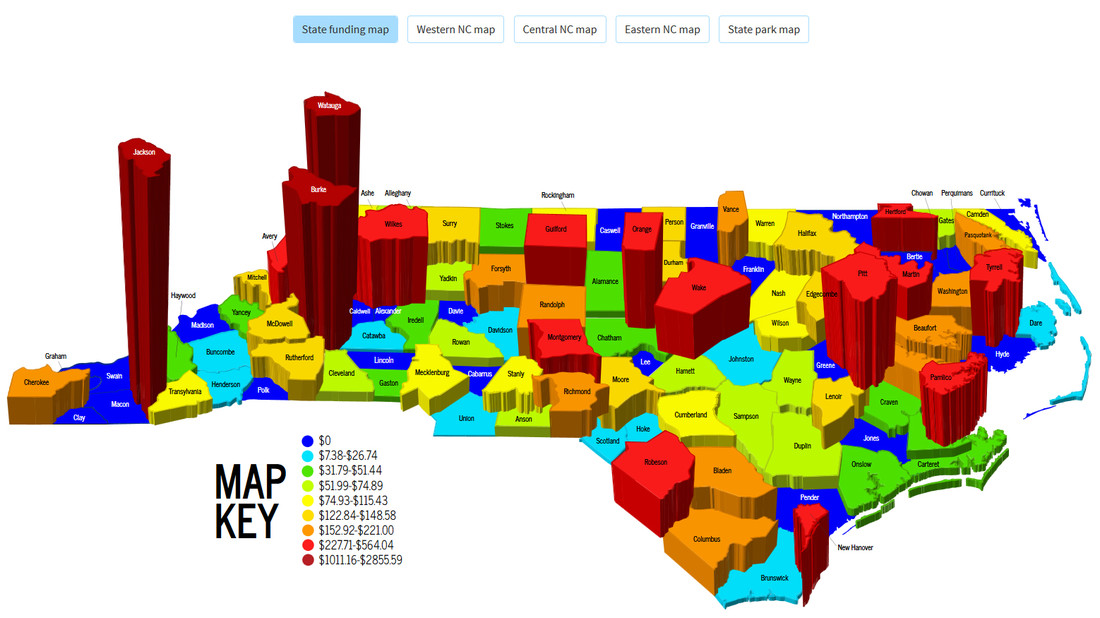Accessible number-crunching
How to turn a bond issue into a visual story
 |
| Nick Dumont |
Issuing bonds is one of the most important functions of state and local governments, and one of the most boring subjects in newspaper reporting. Start explaining how much money is involved, what it will be used for, how it's structured, why it's needed and whether there's a vote involved, and pretty soon the reporter has hit 30 inches and an editor is wondering why.
This past March, North Carolina voters had to decide whether to approve a $2 billion statewide bond issue to be used for schools, infrastructure and parks. To answer the basic questions of who got how much money for what, the Gaston Gazette took an interactive approach that won an award in a recent GateHouse Media contest.
"We were trying to think of a really accessible way for readers to understand where the money was going," said visual journalist Nick Dumont. "So we decided to break it down county by county, because that's how the legislation distributed it.
"We were just going to do a traditional story with maybe a graphic here and a chart here. It just wasn't working. It was way too plain. It was too text-heavy. It wasn't very clear.
"I said, 'What if we just focused on the visual more than the text?'"
The result was "Breaking down North Carolina's Bond Act," (http://web.gastongazette.com/interactive/county-bond-wip/). It employed a multi-level, multi-colored state map, done in Adobe Illustrator, that provided specifics on each county when a reader clicked on it. In addition to the main map (click State Funding) the project was also broken down into regional maps and a state park map.
First, the money going to each county was broken down per capita, making the subject matter more digestible for readers and immediately demonstrating that some counties were getting a lot more money per person than others. Larger amounts went to counties with state universities. Some western North Carolina counties received relatively higher amounts of money. On the other hand, 24 counties received nothing.
Clicking on individual counties yielded details about the spending. For example, of $78 million going to Watauga County, $70 million was earmarked for Appalachian State University. On the other hand, Dare County was allotted $751,500, all of it designated for Jockeys Ridge State Park.
Voters approved the bond issue. The package was shared with sister GateHouse papers in Shelby, Hendersonville and Wilmington.
"There is a lot of text on that page, but it doesn't really feel like it because the visuals are breaking it up," Dumont said. The package also allows readers to choose what they want to study, such as their home county and surrounding counties, large or small counties, or one in which they have a particular interest.
For other journalists interested in similar projects, Dumont says it's important to be able to tell a story in different ways.
"My advice would be, don't focus too much on one skill," he said. "You don't want to be known as the person who can only write, or the person who can only take photographs.
"The way journalism is trending is that every reporter and every journalist need to have a variety of skills. If you're reporting, you need to be able to take a photo, you need to shoot video, you need to be able to write and report.
"Learn as many skills as you can and try to be a jack-of-all-trades. That way you can be valuable in more than just one area."
For more information, contact Nick Dumont at ndumont@gastongazette.com.
 |
|
Jane Nicholes |
Jane Nicholes, a regular contributor to the Southern Newspaper Publishers Association's eBulletin, is a freelance writer and editor based in coastal Alabama. She is an award-winning veteran of more than 30 years in the newspaper business. Reach her at jbnicholes@att.net. Suggestions for future stories and comments on this piece are welcomed.






